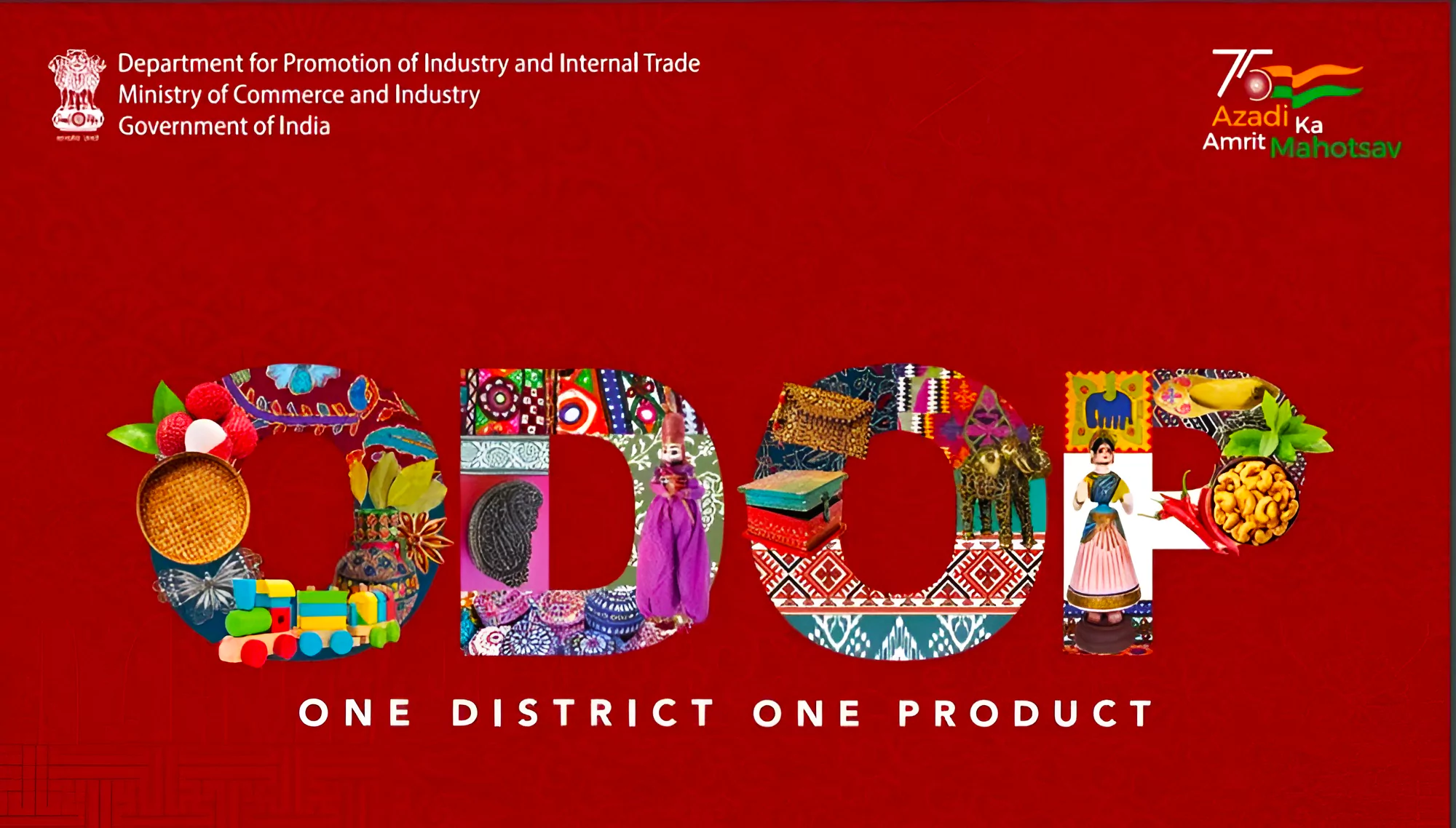Context:
Department for Promotion of Industry and Internal Trade (DPIIT) organizes nationwide ‘One District One Product Sampark’ events.
DPIIT Organising ‘ODOP Sampark’ Programme To Revive Indigenous Industries
- These events create awareness about the initiative and showcase success stories emerging from various districts across the nation.
- ‘One District One Product Sampark’ led by DPIIT in partnership with the Press Information Bureau (PIB) provides a dynamic space for real-time insights, addressing challenges, and exploring opportunities faced by rural-local industries, contributing to immediate growth and development.
What is One District One Product?

One District One Product: It is an initiative launched with the aim of unlocking the full potential of districts, fostering economic and socio-cultural growth, and generating employment, particularly in rural areas.
-
- The One District One Product (ODOP) concept originated in Japan as a strategy for regional development.
- Examples : Zari Zardozi embroidery of Bhopal , Blue Pottery of Jaipur
- Nodal Ministry: Ministry of Commerce and Industry.
- It is a centrally sponsored scheme shared by the Centre and states in 60:40 contributions.
- Objective : To transform each district in India into an export hub by promoting its specialized products.
- This involves scaling up manufacturing, supporting local businesses, identifying potential foreign customers, and aligning with the vision of ‘Atmanirbhar Bharat.’
- The One District One Product Initiative has identified 1102 products from 761 districts nationwide.
- It aligns with the ‘Districts as Exports Hub’ initiative led by the Directorate General of Foreign Trade (DGFT), Department of Commerce.
Significance Of One District One Product
- Promotion of Traditional Expertise By Identifying a specific product or industry in which a district can excel, leveraging factors such as local resources, traditional skills, historical significance, or existing infrastructure.
- Enhancement of Cultural Heritage: Promotion of Industries integral to a district’s cultural identity. It will help in safeguarding cultural heritage and ensures the transmission of traditional skills across generations by preserving and revitalizing these crafts.
- Product Diversification: One District One Product aims to mitigate vulnerability arising from dependence on a limited number of industries by encouraging a diverse range of products across districts.
- Boost to Inclusive Growth : By involving marginalized communities, women, and artisans through skill development, training, and entrepreneurship will enhance economic activities, reducing disparities and fostering social equity.
- Sustainability : One District One Product prioritizes sustainability by leveraging local resources and expertise, aligning with principles of environmental conservation and responsible resource utilization.
- Promotion of Exports : By prioritizing the improvement of quality, branding, and marketing for products unique to each district, One District One Product has the potential to boost export levels.
- Supply Chain Improvement Right from upgrading production techniques, improving product quality, developing branding and marketing strategies, and establishing efficient distribution networks.
Way Forward
- Promotion of Infrastructure Development for FPOs, SHGs,micro enterprises.
- Capacity Building: Schemes like PM Vishwakarma which aims to elevate Indian crafts & skills among local artisans globally through systematic growth and recognition.
- Integration with E-commerce platform: For improved outreach, product design, and manufacturing, expanding into new markets.
Download: One District One Product List
Conclusion
In the era of globalization, initiatives such as One District One Product prove beneficial for local sectors grappling with challenges like credit access, high institutional credit costs, technology gaps, supply chain integration issues, and safety compliance. Reinforcing these aspects through One District One Product not only minimizes waste and generates employment but also aligns with the government’s objective of doubling income for farmers and local artisans.
News Source: PIB
![]() 3 Feb 2024
3 Feb 2024

